
Article Summary: Grand Canyon Facts
Who’s ready for some amazing facts about Grand Canyon National Park? It’s a park filled with beautiful landscapes and amazing stories.
More Than Just Parks is your one-stop-shop when it comes to learning everything you’ll need to know about America’s national parks. We’ve got expert guides, beautiful photos, helpful tips, breathtaking films and so much more.
I’ve been to so many of these amazing places since retiring from teaching in 2018. Did I mention that I taught history? I spent a lifetime teaching about the history behind some of these natural wonders. Then I got to see them firsthand. And now I’m sharing some of the incredible stories about these beautiful places with you. It doesn’t get any better than that!
To get you excited about planning your next visit, in this article we’re covering 16+ fascinating facts about Grand Canyon National Park.
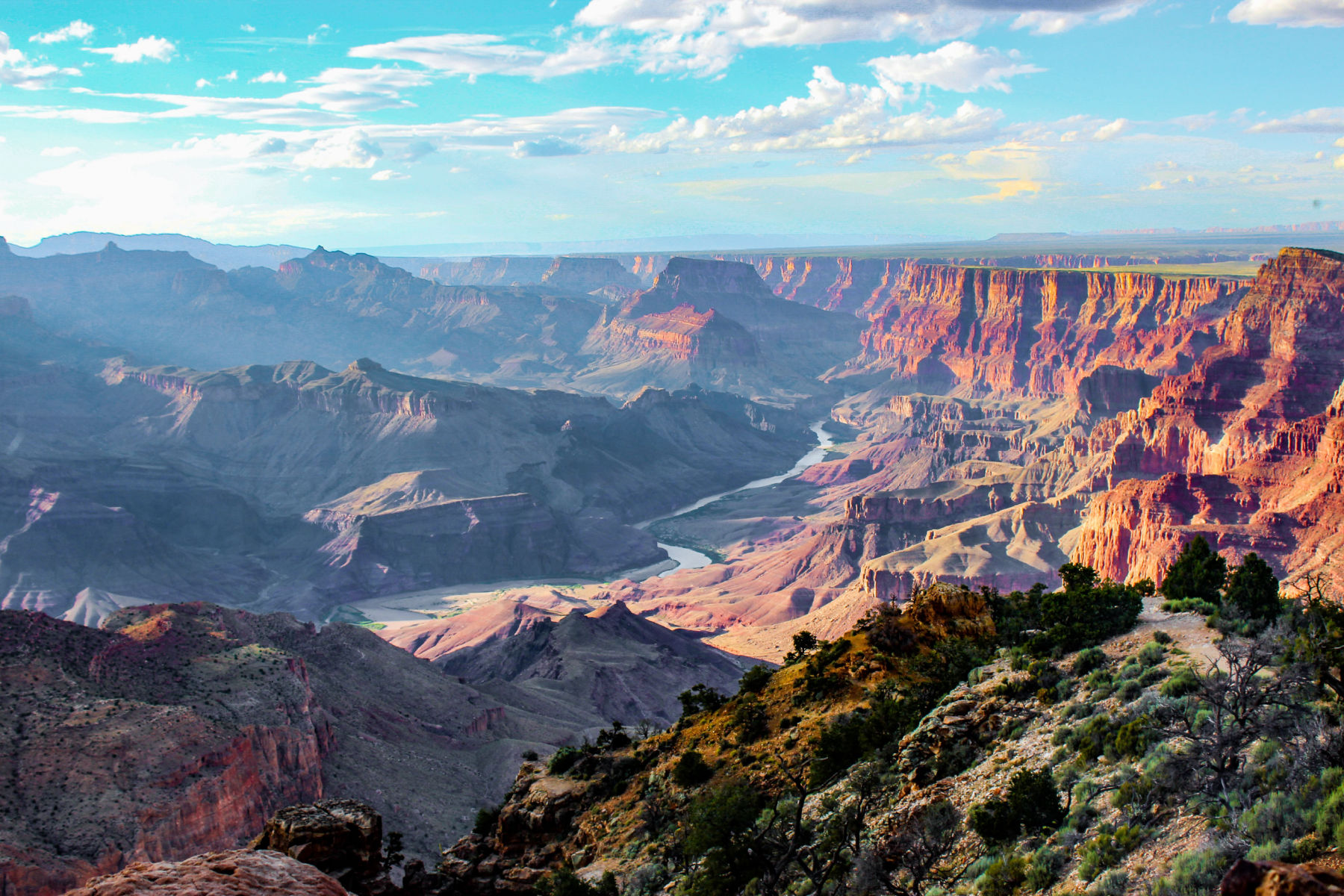
Table Of Contents: Grand Canyon Facts
Grand Canyon Facts
- Basic Facts About The Grand Canyon
- Top 5 Grand Canyon National Park Facts
- Top 10 Grand Canyon Facts
- Top 16 Grand Canyon National Park Facts
- 11. There’s Actually A Town Inside Of The Grand Canyon
- 12. The Grand Canyon Is Full Of Fossils
- 13. The Grand Canyon Featured A Plane Crash Which Changed Aviation History
- 14. The Grand Canyon Makes A Cameo Appearance In National Lampoon’s Vacation
- 15. There are Hidden Caves In The Grand Canyon
- 16. There’s A Secret At The Bottom Of The Grand Canyon
- Why Trust Us About Grand Canyon National Park?
- Meet The Parks Brothers
- Map Of The Grand Canyon
- We Hope You’ll Follow Our Journey
Basic Facts About The Grand Canyon
Grand Canyon National Park is a world-famous natural attraction located in Arizona, in the United States. The park covers over 1.2 million acres of land and is home to the Grand Canyon, a massive, colorful, and deeply carved canyon that is one of the most iconic and breathtaking natural wonders in the world.
The Grand Canyon was formed over millions of years as the Colorado River and its tributaries carved their way through layers of rock, creating a canyon that is over a mile deep and up to 18 miles wide in some places. The layers of rock exposed in the canyon walls provide a record of the Earth’s history, with some layers dating back over 2 billion years.
The park is home to a wide variety of plant and animal life, including over 1,500 species of plants, more than 400 species of animals, and over 200 species of birds. The park is also home to several Native American tribes, who have lived in the area for centuries and have a deep spiritual connection to the land.
There are many ways to explore and enjoy Grand Canyon National Park. Visitors can take a scenic drive along the park’s roads, go hiking or biking on the park’s trails, take a boat tour down the Colorado River, or even go rafting or kayaking. There are also several historic lodges and hotels located within the park, providing comfortable accommodations for visitors.
Grand Canyon National Park is a truly amazing and awe-inspiring place, offering visitors the opportunity to experience the beauty and wonder of one of the most famous natural wonders in the world.
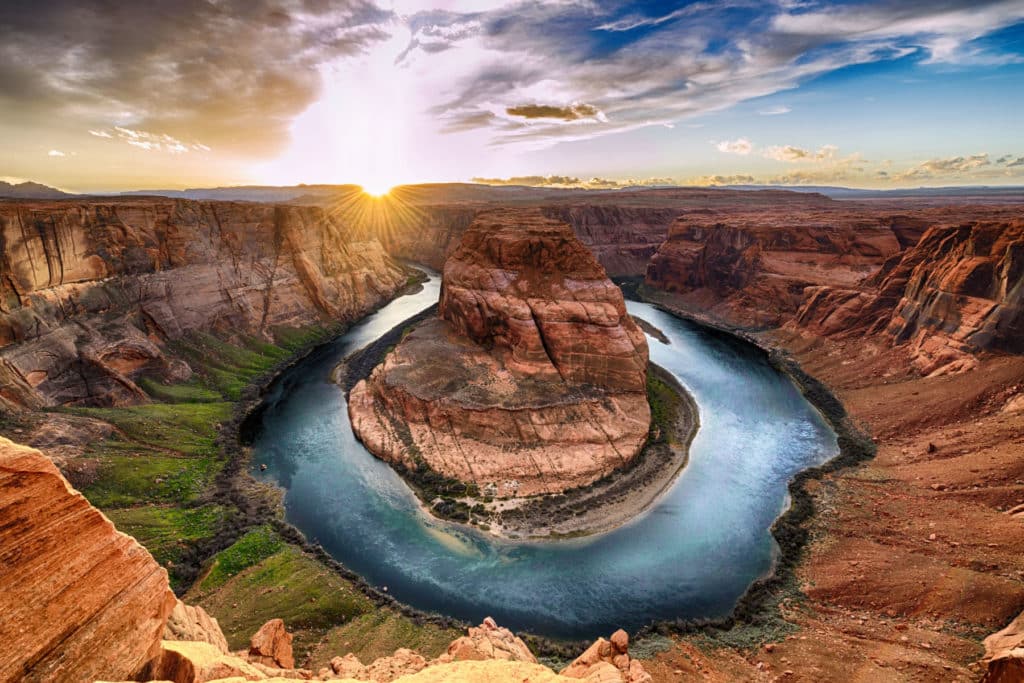
Here Are Some Of The Basic Facts:
- Location: Arizona
- Acreage: Grand Canyon National Park covers a total area of 1,217,403 acres
- Visitation: A total of 4.53 million in 2021
- Highest Elevation: 9,165 feet at North Rim Entrance
- Lowest Elevation: 1,200 feet at the Colorado River
- Average annual precipitation: The South Rim receives 17 inches (43 cm) of annual precipitation on average, while the North Rim receives 26 (66 cm) inches of annual precipitation on average
- When Did It Become A National Park? In 1903, President Theodore Roosevelt visited the canyon. He designated it a national monument in 1908. In 1919, President Woodrow Wilson made Grand Canyon a national park to protect the land and the resources within it, managed by the National Park Service.

Grand Canyon Facts
Top 5 Grand Canyon National Park Facts
1. The Grand Canyon Was Explored By A Real Life “Indiana Jones”
I don’t know why Hollywood hasn’t made a film about this expedition. It’s Lewis & Clark Meets Indiana Jones!
In 1869, John Wesley Powell, a one-armed Civil War veteran and self-trained naturalist, embarks on a daring descent of the mighty Colorado River.
Powell boldly goes where no one has gone before–into the Great Unknown!

“We are now ready to start on our way down the Great Unknown . . . We are three quarters of a mile in the depths of the earth . . . We have an unknown distance yet to run; an unknown river yet to explore. What falls there are, we know not; what rocks beset the channel, we know not; what wall rise over the river, we know not. Ah, well! We may conjecture many things. The men talk as cheerfully as ever; jests are bandied about freely this morning; but to me the cheer is somber and the jests are ghastly.”
-John Wesley Powell, August 13, 1869
It Was The Final American Frontier To Be Conquered
By 1869, Lewis and Clark had already mapped much of the American West. The transcontinental railroad was completed that same year. Now Americans could truly go from sea to shining sea.
The Rockies and the Sierra Nevada and Yosemite and Death Valley had all been explored. Everything had been explored. Everything, that is, except for one spot. In the American Southwest, an immense area–an area as large as any state, as large as any country in Europe–remained largely unexplored.
Mapmakers even wrote the word “unexplored” next to this area which was still largely surrounded in mystery.
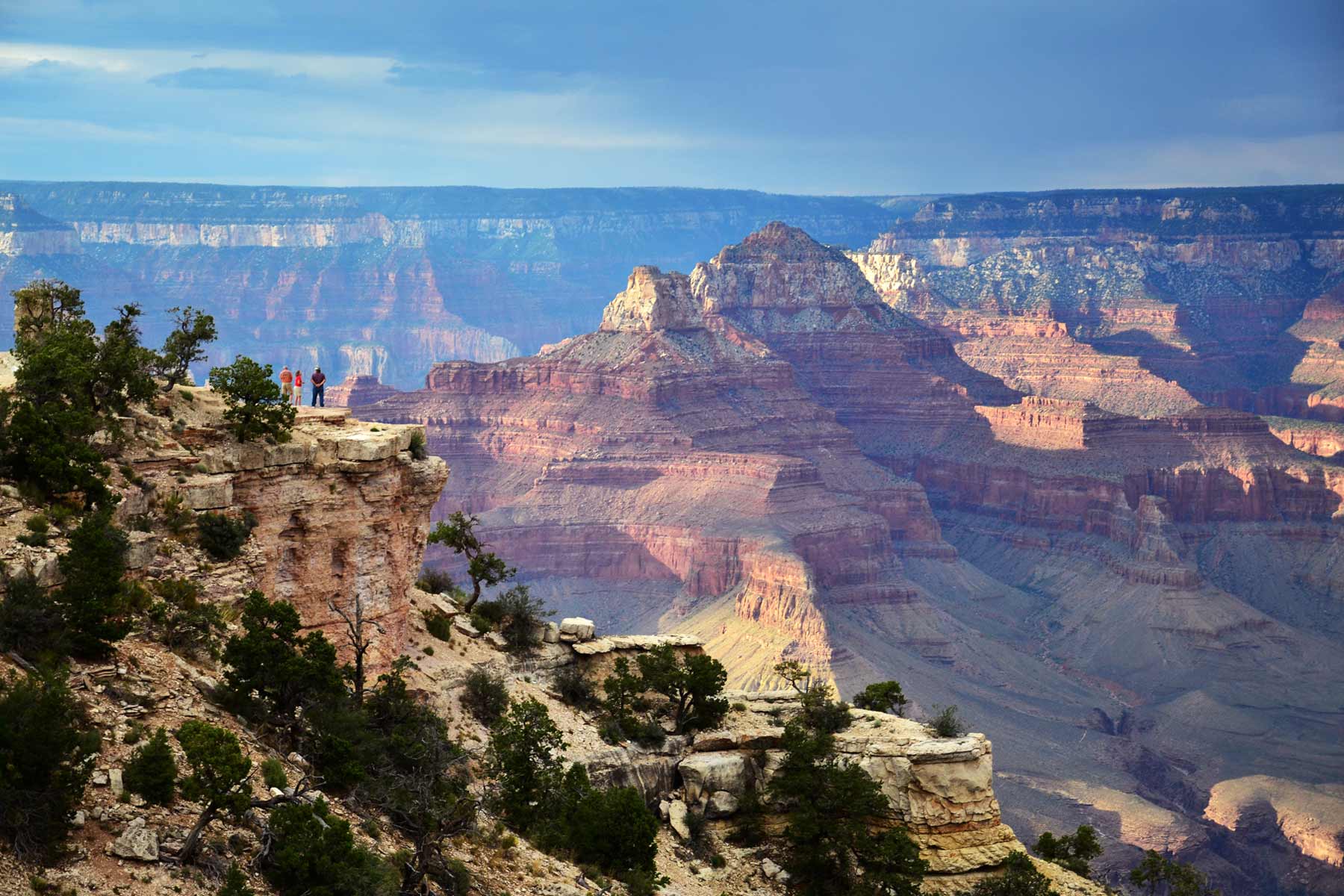
John Wesley Powell
John Wesley Powell remains one of the most legendary characters to pass through the pages of history.
Powell was an adventurer from a very early age. At 21, he walked across the state of Wisconsin. The next year, he rowed the entire Mississippi River. Later he made trips down the Ohio and Illinois Rivers.
Even before his historic, early whitewater run through the entire Grand Canyon, Powell had already led a full life.
During the Civil War, he commanded a Union artillery regiment and lost his right arm after being wounded in the Battle of Shiloh.
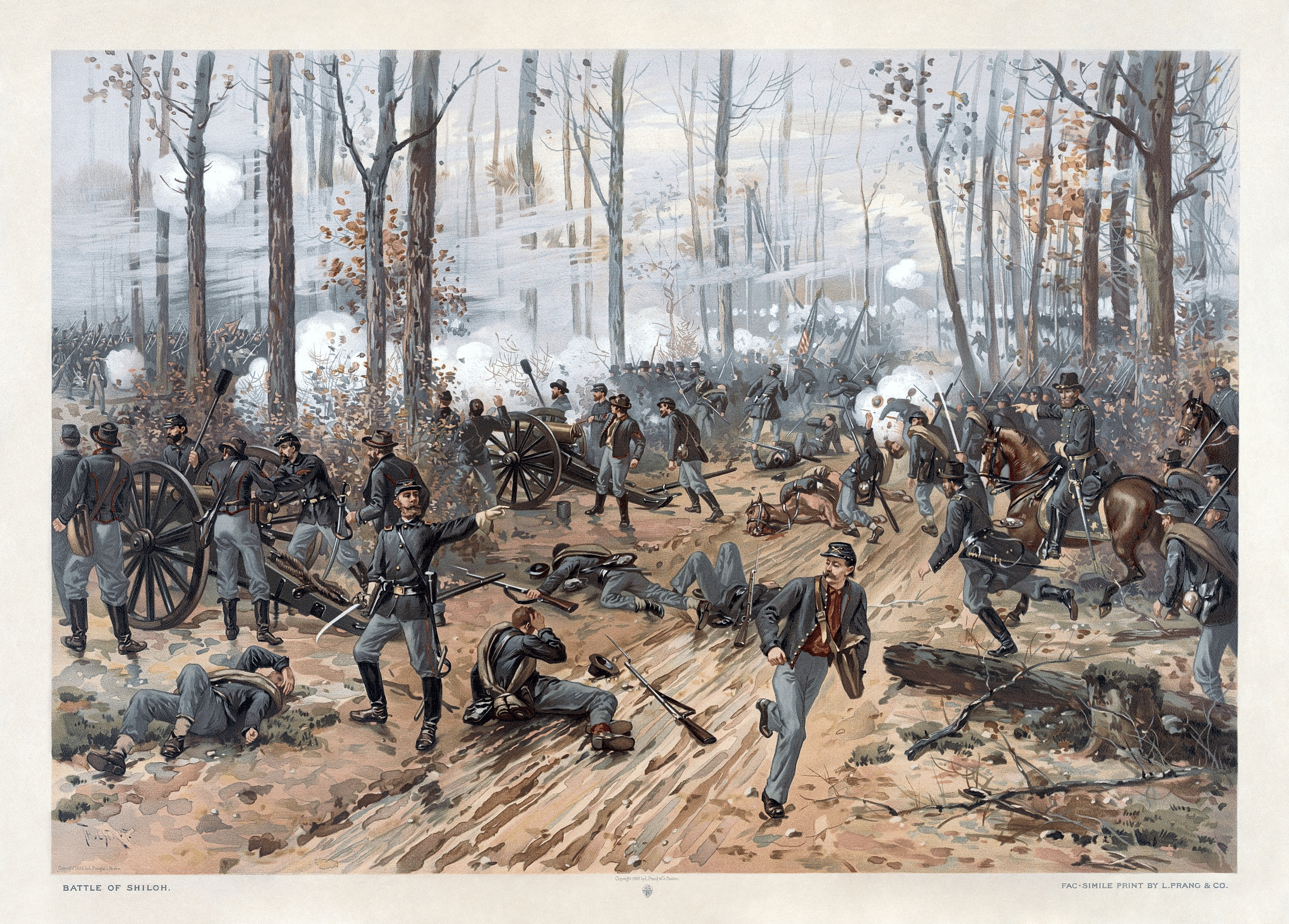
After the war, he joined in expeditions all over the southwest, becoming the first recorded hiker to summit Longs Peak in Colorado. It was on these journeys he learned of the unexplored canyon country of the Colorado Plateau.
Powell was a geologist, ethnologist, but–most of all–John Wesley Powell was best known for his exploration of the upper portion of the Colorado River and the Grand Canyon.
The Powell Expedition
On May 24, 1869, Powell began a journey for the ages as he led a company of men down the Green and Colorado rivers from Green River, Wyoming to St. Thomas, Nevada.
Powell was accompanied by 9 men in four wooden boats. He led the expedition through the Grand Canyon and over punishing rapids that many would hesitate to run today with modern rafts.
On the first trip, in 1869, his men suffered through perilous rapids, losing an entire boat and a third of their supplies, rotten food, fires in camp, and fist-fights among the men.
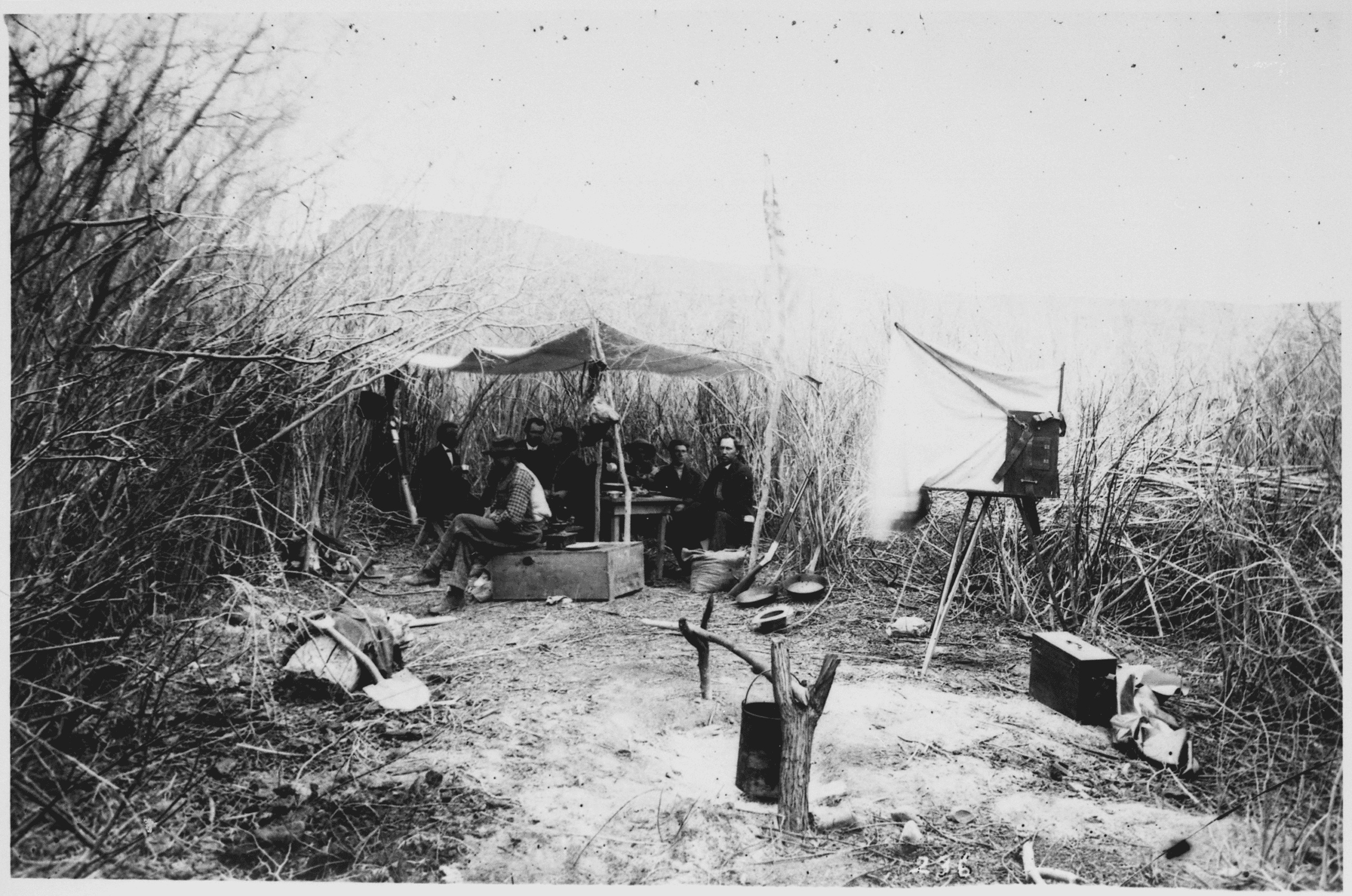
Separation Canyon
On August 27, the group reached a place that Powell would later name Separation Canyon.
Of the ten men that started out from Green River Station, six completed the entire journey. Frank Goodman left the expedition on July 6 during the resupply at the Uinta River Indian Agency, claiming he’d had more than enough adventure. He walked away and lived for some years with the Paiutes of eastern Utah.
Now Oramel Howland, the man tasked with mapping the river, begged Powell to call it quits. Howland proposed a massive climb to the rim and then a 75-mile hike to the nearest Mormon settlement.
Powell refused to go, but Howland managed to convince his younger brother, Seneca, and William H. Dunn that the danger was too great. These three men feared they could not survive the dangers of the river much longer.
They attempted to hike out of the Canyon, but were never seen again. According to one theory, the three men allegedly encountered a war party of Shivwit Indians and were killed.
No one knows for sure what happened to them, however, as their bodies were never recovered.
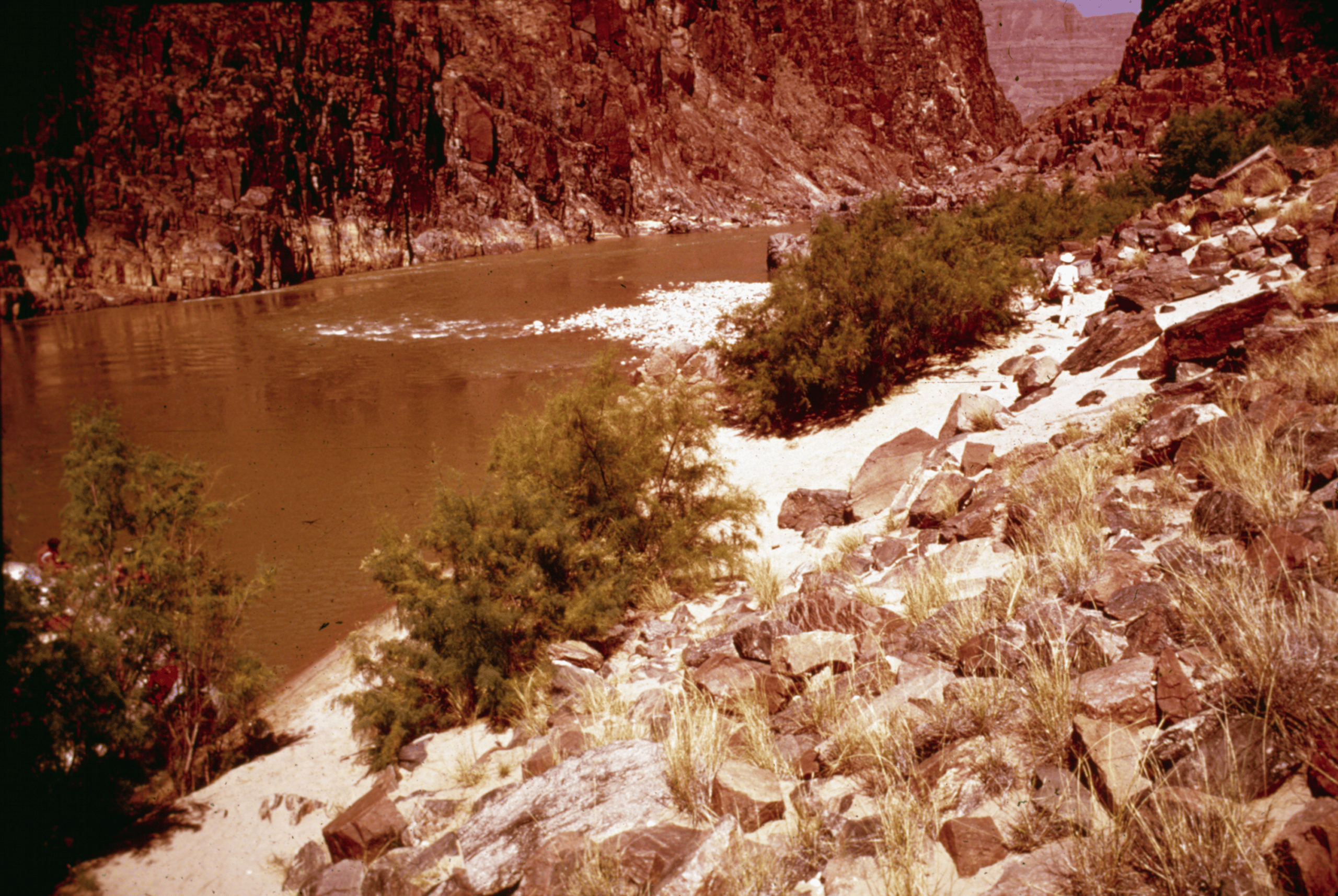
Powell Presses On
All of the instruments had been lost or broken, or had been left behind with the fossils and minerals they had collected. No one had managed to do what these men were attempting, but John Wesley Powell pressed on.
They battled the dangerous rapids, slept at night in wet clothing on ledges so narrow that to roll over might mean plunging into the thundering river below.
Nevertheless, on August 29, some 13 weeks and 900 miles from the start of their journey, they drifted out from between the Grand Wash cliffs of the Grand Canyon to rolling, mountainous country.
Despite a series of hardships, including losses of boats and supplies, near-drownings, and the eventual departures of several crew members, the voyage produced the first detailed descriptions of much of the previously unexplored canyon country of the Colorado Plateau.
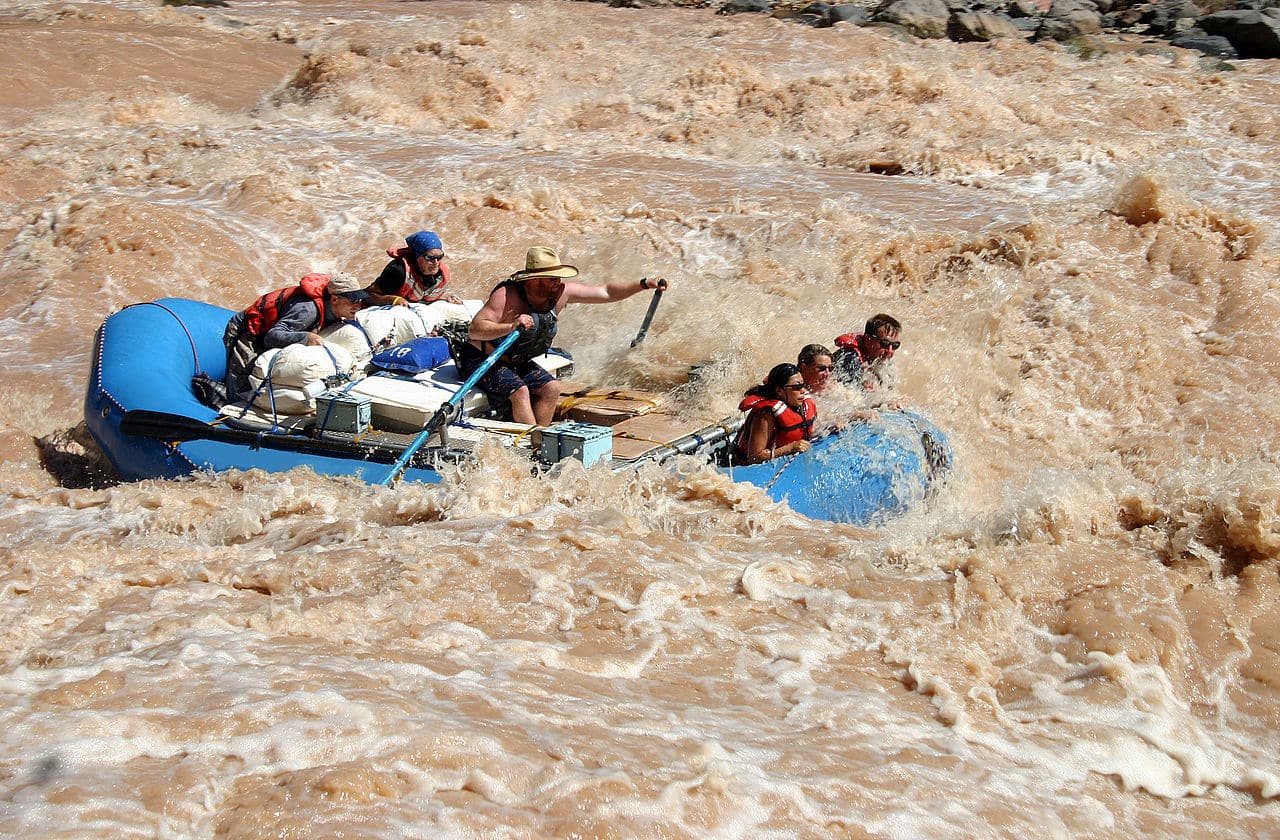
Now here’s an interesting postscript to the story: The Colorado River was considered so dangerous that as late as World War Two, seventy years after Powell successfully attempted the feat, only an additional 250 people had successfully traveled through the Grand Canyon in boats.
Powell Led A 2nd Expedition
Powell led a second expedition (successfully again) in 1871. This time he was better prepared and better equipped.

In 1875, Powell published a book based on his explorations of the Colorado titled: The Exploration of the Colorado River and its Canyons.
Director Of The U.S. Geological Survey
John Wesley Powell went on to serve as Director of the U.S. Geological Survey from 1881 to 1894.
As director of the U.S.G.S., he sparked controversy by advocating strict conservation of water resources in the developing states and territories of the West.
Powell also became the Director of the Bureau of Ethnology at the Smithsonian. He held this position concurrently with his directorship of the U.S.G.S., but remained in this post until his death.
John Wesley Powell died on September 23, 1902. He was buried in Arlington National Cemetery.

To learn more about this remarkable man and his amazing expedition, I recommend reading Down The Great Unknown: John Wesley Powell’s 1869 Journey of Discovery & Tragedy by Edward Dolnick.
The author has written a brilliant narrative about a thrilling journey complete with a cast of memorable heroes.
It’s a real page-turner about the last great exploration on American soil.
“Now we have canyon gorges and deeply eroded valleys, and still the hills are disappearing, the mountains themselves are wasting away, the plateaus are dissolving, and the geologist, in the light of the past history of the earth, makes prophecy of a time when this desolate land of Titanic rocks shall become a valley of many valleys, and yet again the sea will invade the land, and the coral animals build their reefs . . .
-John Wesley Powell, Explorations of the Canyons of the Colorado
Thus ever the land and sea are changing; old lands are buried, and new lands are born.”
2. Grand Canyon Is A Gateway To The Afterlife
The Hopi Tribe is a sovereign nation located in northeastern Arizona.
The Hopi people have lived in Hopitutskwa and have maintained our sacred covenant with Maasaw, the ancient caretaker of the earth, to live as peaceful and humble farmers respectful of the land and its resources. (Source: The Hopi Tribe)

Over the centuries they have survived as a tribe, and to this day have managed to retain their culture, language and religion despite influences from the outside world.
The tribe has always placed great spiritual significance on the Grand Canyon.
They believe that upon death, a person passes westward through a “place of emergence,” located upstream from the confluence of the Colorado and Little Colorado rivers in the canyon, on his or her journey to the afterlife.
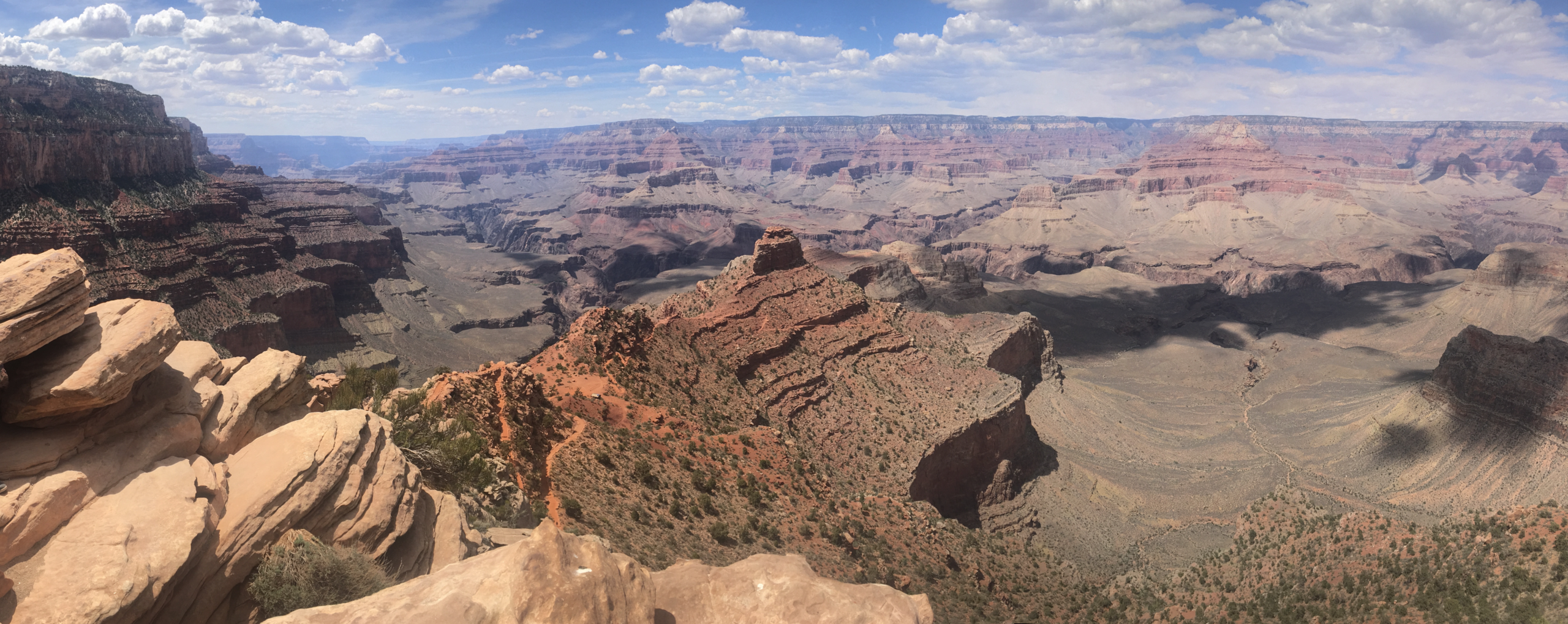
3. Two Intrepid Brothers Invented Tourism Photography At The Grand Canyon
In 1902, two intrepid brothers named Ellsworth and Emery Kolb became full-time residents of the Grand Canyon. They spent their days trekking, exploring, and documenting everything with photographs.
Ellsworth and Emery established themselves as both photographers and adventurers during the next 12 years. Their photographs of visitors and lesser-known areas of the canyon supported their chosen career path.
In the process, the Kolb Brothers basically invented tourism photography.
Ellsworth and Emery Kolb bought a photography studio in Williams, Arizona for $425; Emery operated it for a year, mainly photographing saloon girls. They understood the new demand for tourist photographs while people visited the canyon so they moved the studio there.

These two intrepid brothers established a thriving business photographing tourists as they descended the canyon on donkeys.

The Kolb Brothers sold their incredible views of the Grand Canyon, many of them featuring the brothers doing amazing athletic feats from beautiful places in the canyon.
Their Relentless Promotion Helped Establish The Grand Canyon
The relentless promotion of the Grand Canyon through prints, postcards, and traveling lectures by Emery Kolb helped establish the Grand Canyon as the major tourist attraction that it is today.
These intrepid two brothers then moved from photos to filmmaking with the purchase of their first camera.
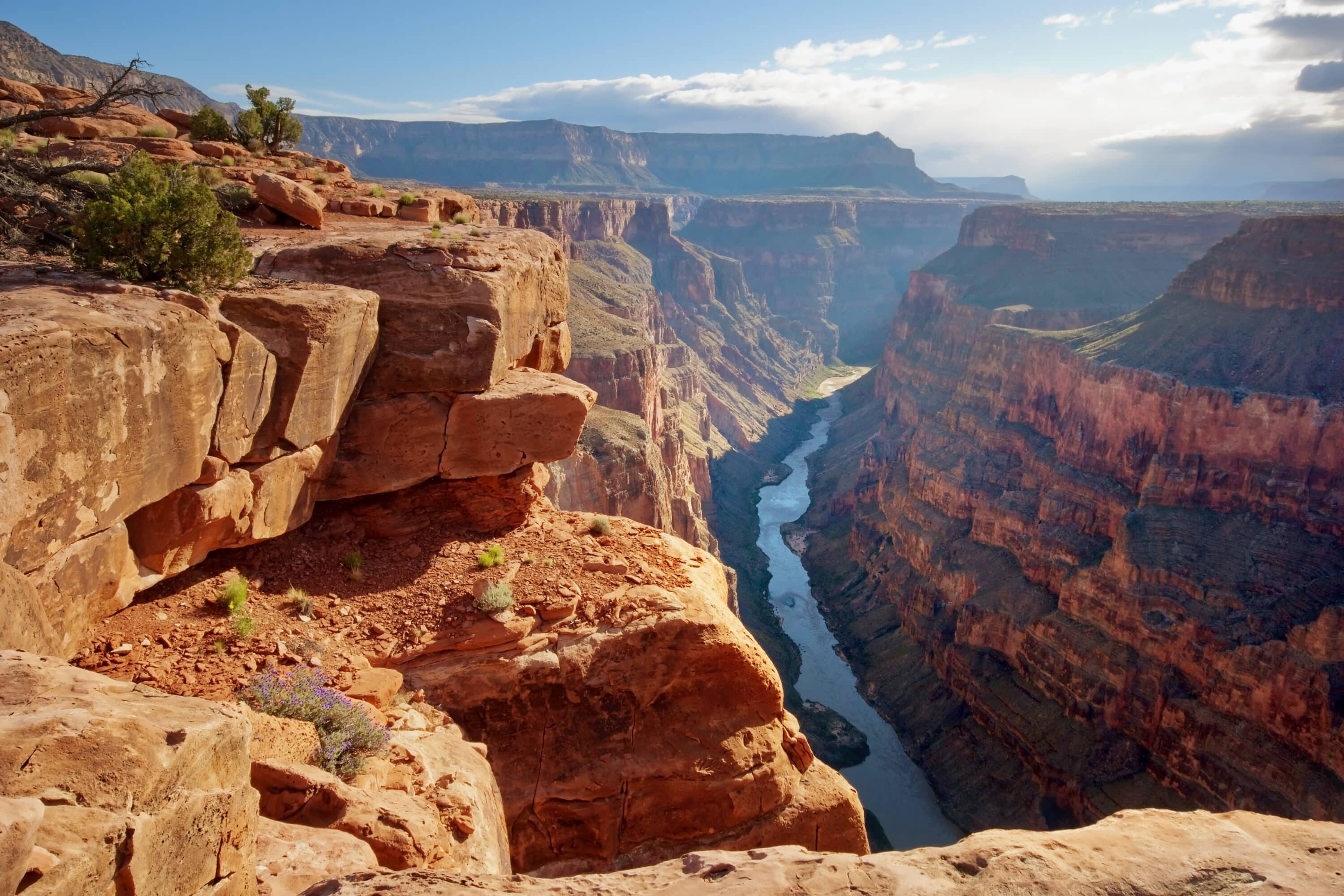
The Kolb Brothers Became Only The Eighth Expedition To Successfully Run The Rapids Of The Grand Canyon
In 1911, The Kolb brothers proposed to row them the entire eleven hundred miles of the Green and Colorado Rivers. They set out to make a movie about the trip.
In early September they launched from Green River, Wyoming. For the next four and a half months, the brothers rowed, careened, roped, dragged, and carried their boats through and around the rapids, often finding themselves swimming in the freezing river, patching and re-patching their boats, and salvaging what film and equipment they could from their flooded hatches.
In the process, the Ellsworth and Emery became just the eighth expedition to successfully run the rapids of the Grand Canyon. The movie they made would become the longest-running documentary in film history.

“Two of the earliest and boldest river runners, Ellsworth and Emery Kolb, set out down the Green in September 1911. Like Powell, they left from Green River Station, Wyoming, their destination the Grand Canyon.
-Edward Dolnick, Down the great unknown: john wesley powell’s 1869 journey of discovery & tragedy
The Kolb Brothers were photographers who would do anything for a picture. They lugged a movie camera along their river trip and filmed their flips and crashes and their good runs, too.
This first-ever white-water documentary made their career; until 1976, when he died at age ninety-five, Emery showed the flickering, black-and-white film four times a day in his studio at the South Rim of the Grand Canyon.”
A Coin Flip Decided Their Futures
Ellsworth and Emery had some general disagreements based largely on their different personalities. Ellsworth was an easy-going daredevil and Emery was more cautious and worrisome.
So, with the flip of a coin, they decided that one of them would stay at the Grand Canyon and one would move on. Emery won the toss which granted him the studio. His brother moved on to Los Angeles, CA.
He died in 1960. In 1962, Emery sold the Grand Canyon Studio to the National Park Service with the agreement that he would operate it until his death.
The studio and adjoining theater are still maintained by the National Park Service. The studio is now a Park Service Gift Shop, and the theater is an art gallery of beautiful Grand Canyon and landscape paintings.
Visit The Kolb Brothers Studio
While at the Grand Canyon, you can see the Amazing Kolb Brothers Exhibit at Kolb Studio, house-turned-museum perched perilously on a western precipice in Grand Canyon Village.
Check out their antique cameras, study paintings by plein-air artists, and watch their 1912 motion picture travelogue, about their life and river trips down the Colorado River.
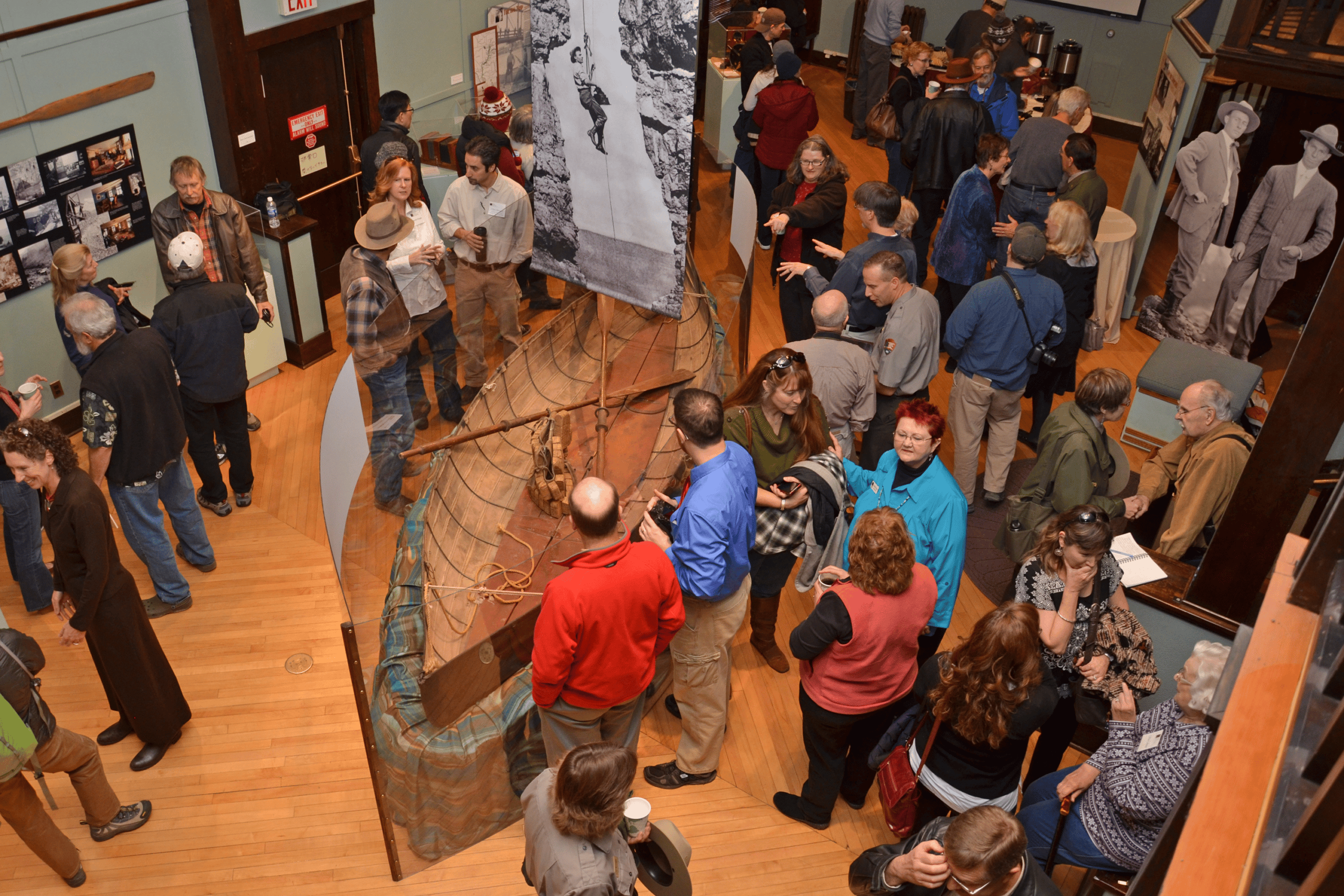
4. The First Woman To Row The The Marble & Grand Canyons
In researching the Grand Canyon, I came across amazing stories of incredibly bold and innovative people from John Wesley Powell to Ellsworth & Emery Kolb.
Another intrepid pioneer whose story I found just as fascinating is Georgie White.
In 1952, Georgie White became the first woman to row the full length of Marble and Grand Canyons. And, she did this at a time when the river running industry was reluctant to even allow women to go on these trips let alone lead them.

An Adventure Born Out Of Grief
What makes this story even more impressive is the fact that Georgie White first came to the Colorado after her 15-year-old daughter Sommona Rose had been struck by a car and killed.
This happened when they were biking together in 1944. As a way to cope with her grief, Georgie embraced river rafting.
“I fell in love with the river, married it, and I don’t plan no divorce,” she famously said.
Georgie White proved to be an innovator in the field of river rafting. She lashed rafts together to build stability in the biggest rapids.
Although she didn’t known it at the time, her “triple rig” was the precursor to modern Grand Canyon motorized rafts.
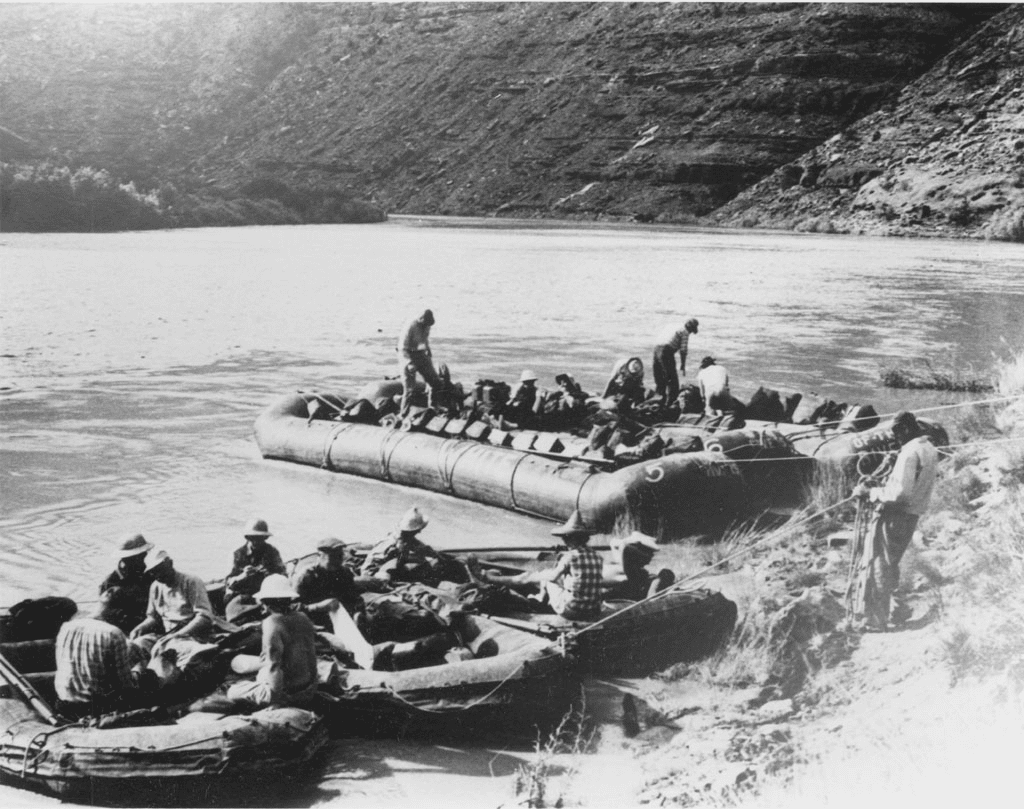
And Georgie White was a shrewd businesswoman too. To support her love of rafting, she started a company she called, “Royal River Rats.”
For 45 years, she guided commercial trips on the Green, the Snake, and the Salmon rivers, and explored rivers in Mexico too. And, while on these trips, Georgie was known for subsisting largely on beer and canned tomatoes.
A River Rafting Celebrity
Georgie White went on to become a river rafting celebrity. In 1961, she took a trip with Secretary of the Interior Stewart Udall, which was featured in Life Magazine.
She then appeared on The Tonight Show with Johnny Carson.
This pioneering female made her last trip through the Grand Canyon in 1991 at the age of 80 dressed in a full-body leopard print leotard.
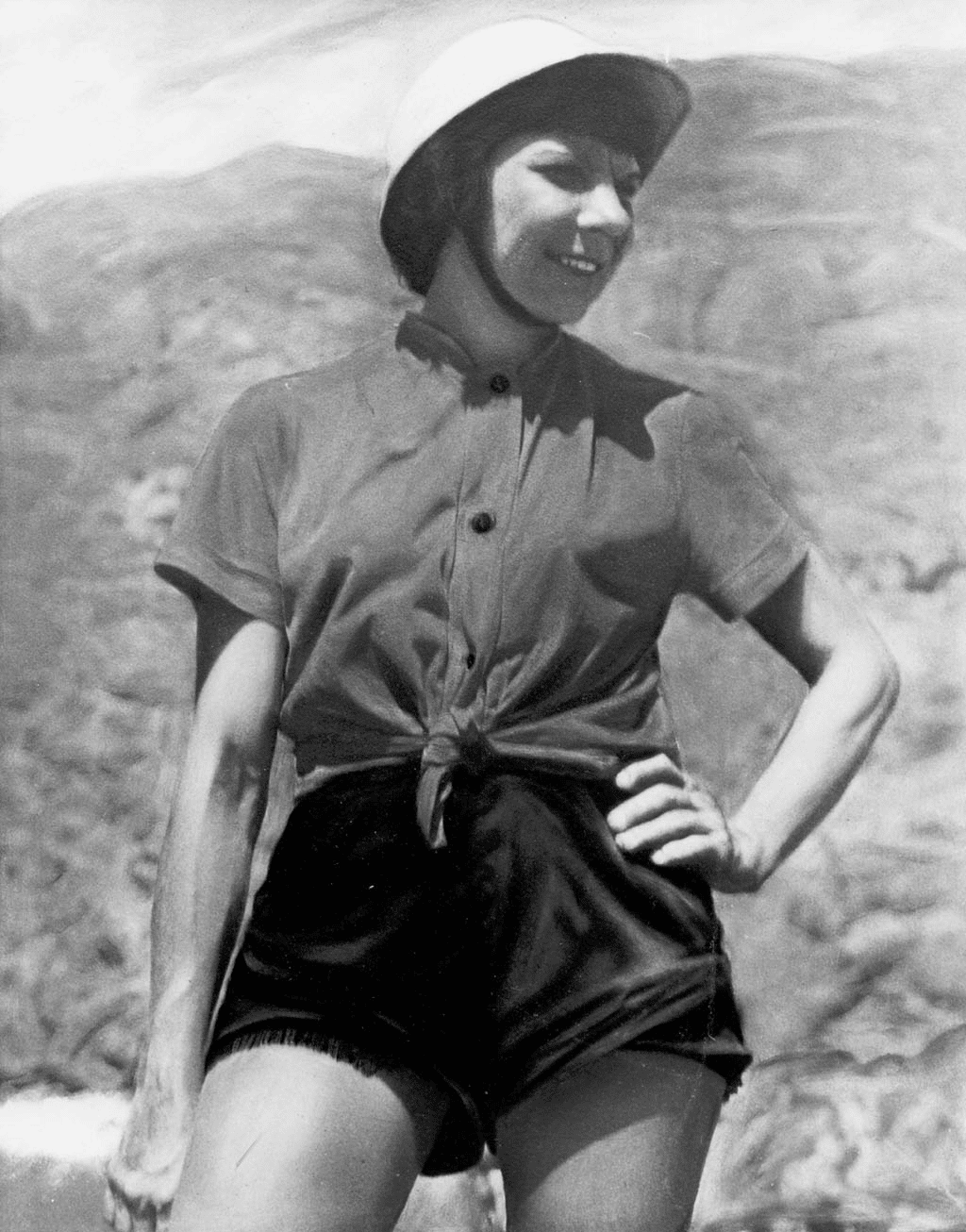
Georgie White lived a life filled with adventure until the age of 81. As one tribute to her stated, “She made a huge impact on the culture and river community, and initiated the modern motorized rafting industry.”
Georgie sported a bright red, Mae West style lifejacket, a leopard print leotard suit, and often had a Coors in one hand and a cigarette in the other, sitting back in her motor well with a big grin on her face.
-River & Oceans Newsletter
5. Grand Canyon Creates Its Own Weather
How many national parks or places of any type create their own weather?
It’s a short list, but you can, however, put the Grand Canyon on that list.
It turns out that sudden changes in elevation have an enormous impact on temperature and precipitation. As you travel up and down the Grand Canyon, you will experience changes in temperature.
Believe it or not, from the rim of the canyon to its lowest point, the temperature can change by more than 25 degrees.
The depths of the gorge are notoriously hot during the summer, while the North Rim is often below freezing in winter so pack accordingly.
The coldest, wettest weather station in the region is the Bright Angel Ranger Station on the North Rim, while the hottest (and one of the driest) is just 8 miles away at Phantom Ranch.
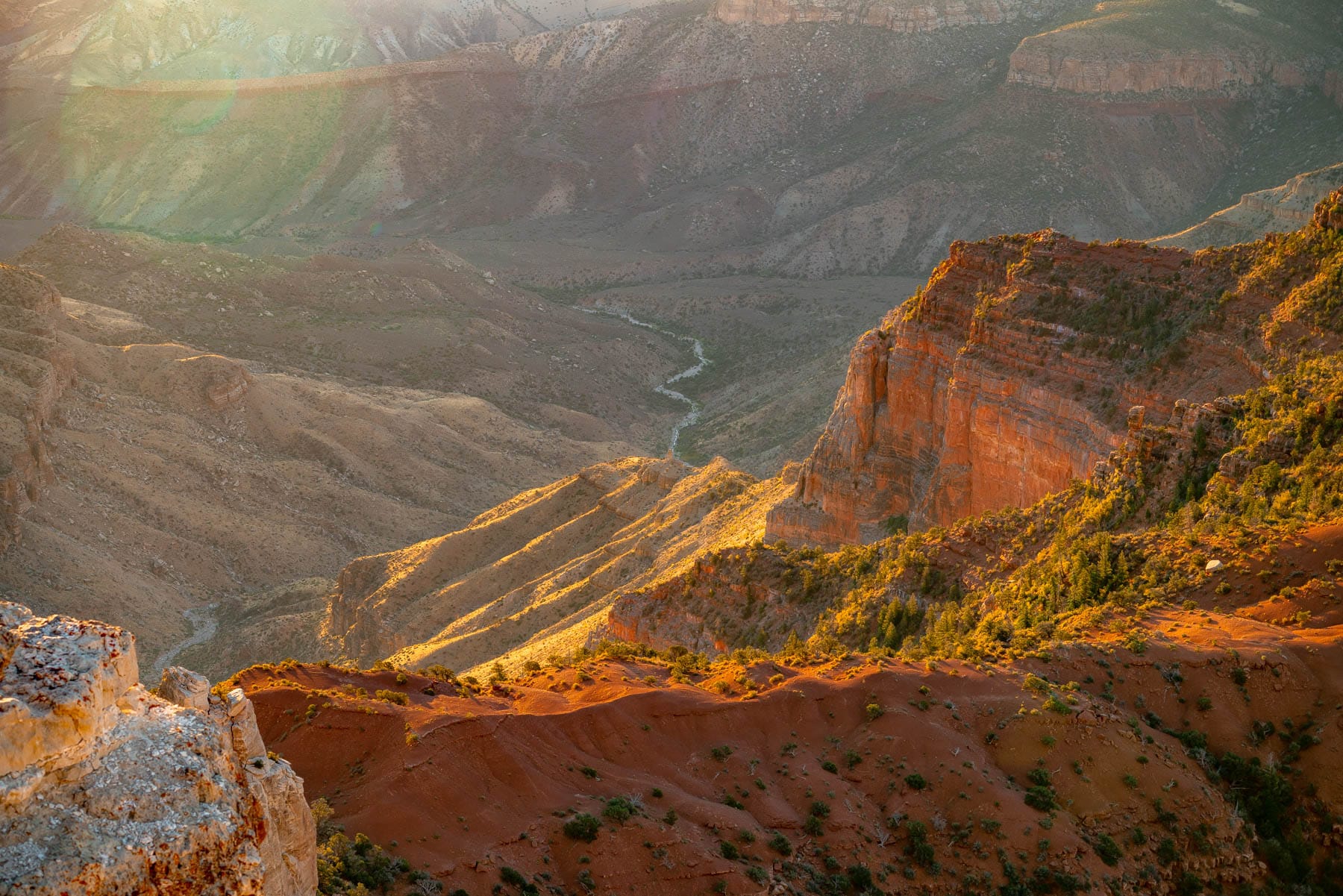
Top 10 Grand Canyon Facts
6. How Old Is The Grand Canyon–We Don’t Know
We used to believe that the Colorado River began carving the Grand Canyon about 6 million years.
In 2012, however, a new study suggested that the process began as early as 70 million years ago.
While we don’t yet know just how old the Grand Canyon is what we do know is that there are an estimated 1,000 caves within the canyon.
Only 335 have been recorded thus far and only one cave is open to the public.

7. Believe It Or Not, The Canyon Was Part Of A Giant Hoax
In 1909, the Arizona Gazette reported that archaeologists had discovered traces of an ancient Tibetan or Egyptian civilization in an underground tunnel in the canyon.
The Smithsonian denied this entire story, however, claiming that they had no knowledge of the archaeologists.
While some conspiracy theorists still believe this may have been a government cover-up the more likely explanation is that it was part of an elaborate hoax.
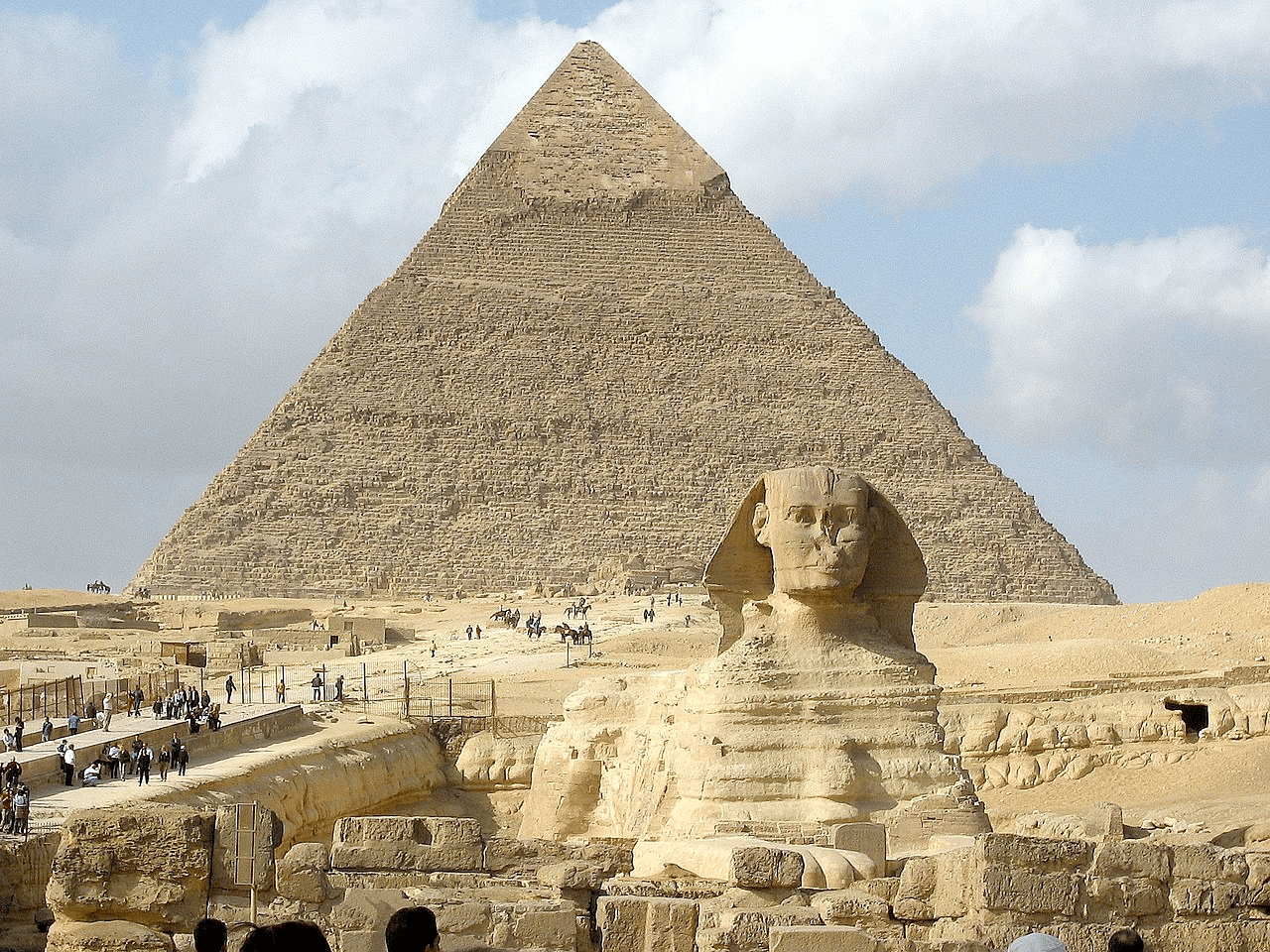
8. The Grand Canyon Was Part Of The Great Unconformity
The Great Unconformity (GU) is one of geology’s deepest mysteries.
It’s a gap of missing time in the geological record between 100 million and 1 billion years long.
It occurs in different rock sections around the world. When and how the GU came to be is still not totally resolved.
The Grand Canyon is a part of this mystery.
The Great Unconformity exposed in the Grand Canyon separates the Tapeats Sandstone from ancient Proterozoic rocks.
It represents approximately 1.2 billion years of missing rock record, which is either due to erosion or non-deposition.
It may have been triggered by the uplift of an ancient supercontinent according to some researchers.

9. Snakes Alive–The Grand Canyon Has Pink Snakes
Six species of rattlesnakes have been observed in the Grand Canyon. If you notice that one of these species is unusually pink then have no fear because your eyes are not playing tricks on you.
These pink snakes are the most common snakes in the park. They’re usually found on sandy trails and rocks, searching for lizards to eat.
While they’re common in the Grand Canyon, they can be found nowhere else on the planet.
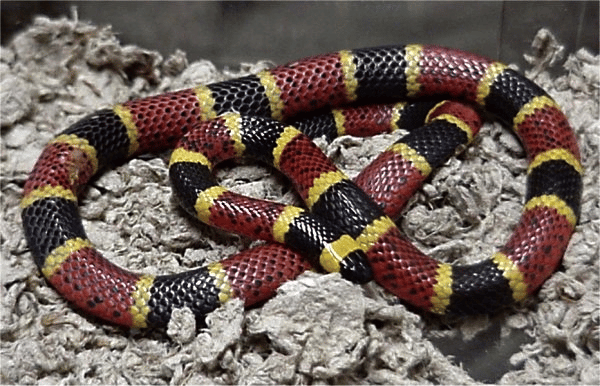
10. The Grand Canyon Is Actually Filled With Wildlife
You might think that a place as inhospitable to life as the Grand Canyon would not be filled with wildlife, but you would be wrong.
There are 373 species of birds, 18 species of fish, 58 species of reptiles, and 91 species of mammals which make the Grand Canyon their home.
.jpg/2560px-Grand_Canyon_National_Park_2012_Celebrate_Wildlife_Day_1136_(7292112902).jpg)
Top 16 Grand Canyon National Park Facts
11. There’s Actually A Town Inside Of The Grand Canyon
Believe it or not, there’s actually a town located inside of the Grand Canyon.
According to the National Park Foundation, Supai Village is located at the base of the Grand Canyon within the Havasupai Indian Reservation.
It’s inaccessible by road and with a population of just 208, it is the most remote community in the lower 48 states, and is the only place where mail is still delivered by pack mule.
If you’re thinking about visiting the village then you need to check the weather forecast as flash floods are common.
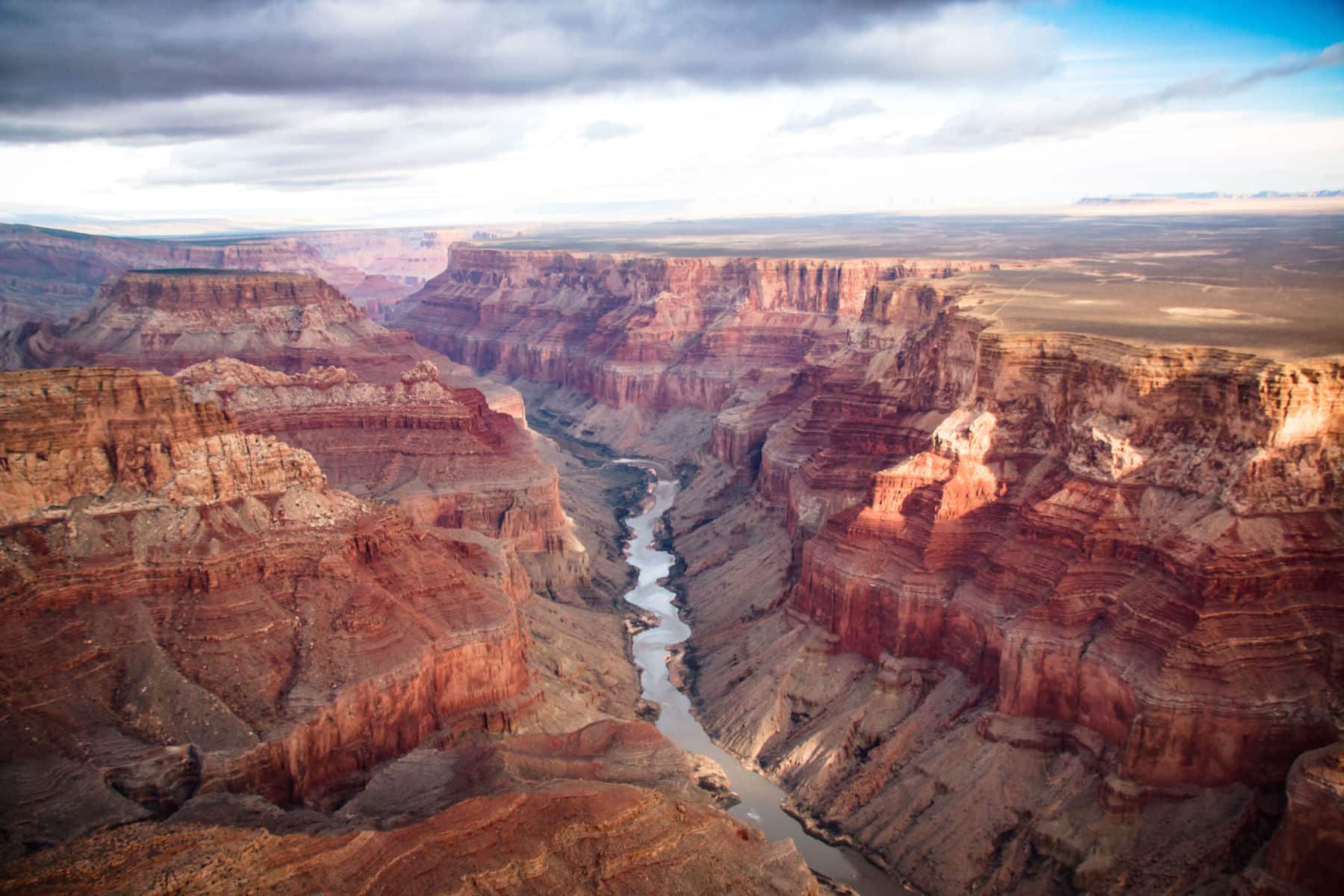
12. The Grand Canyon Is Full Of Fossils
The Grand Canyon has a rich geological history. This makes it a perfect setting for fossils.
While there are no dinosaur fossils you can discover fossils.
They range from ancient marine fossils dating back 1.2 billion years to fairly recent land mammals that left their remains in canyon caves about 10,000 years ago.
.jpg)
The oldest fossils date back to Precambrian Time 1,200 million to 740 million years ago, while some of the later specimens come from the Paleozoic Era 525-270 million years ago.
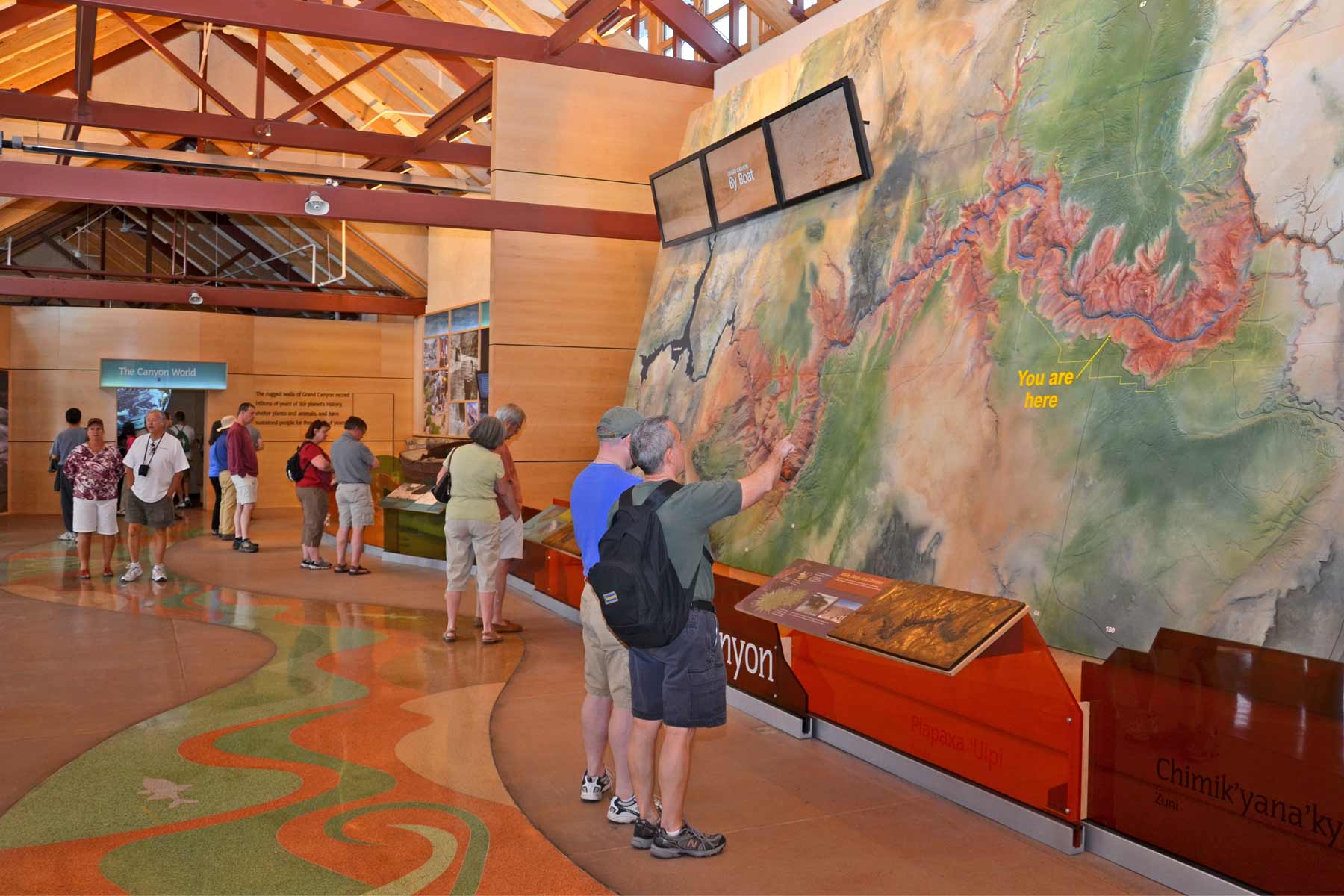
13. The Grand Canyon Featured A Plane Crash Which Changed Aviation History
The TWA Super Constellation and United DC-7 collision over the Grand Canyon on June 30, 1956 resulted in the deaths of all 128 people on board.
The collision occurred at 21,000 feet and both planes were severely damaged, with the tail of the Constellation being ripped off and much of the DC-7’s left wing being severed.
Despite the lack of flight recorders, witnesses, radar records, and survivors, investigators were able to determine that the accident was not caused by the actions of either crew, but rather by the inadequacies of the air traffic control system at the time, which was struggling to keep up with the increasing number of airplanes in the skies.
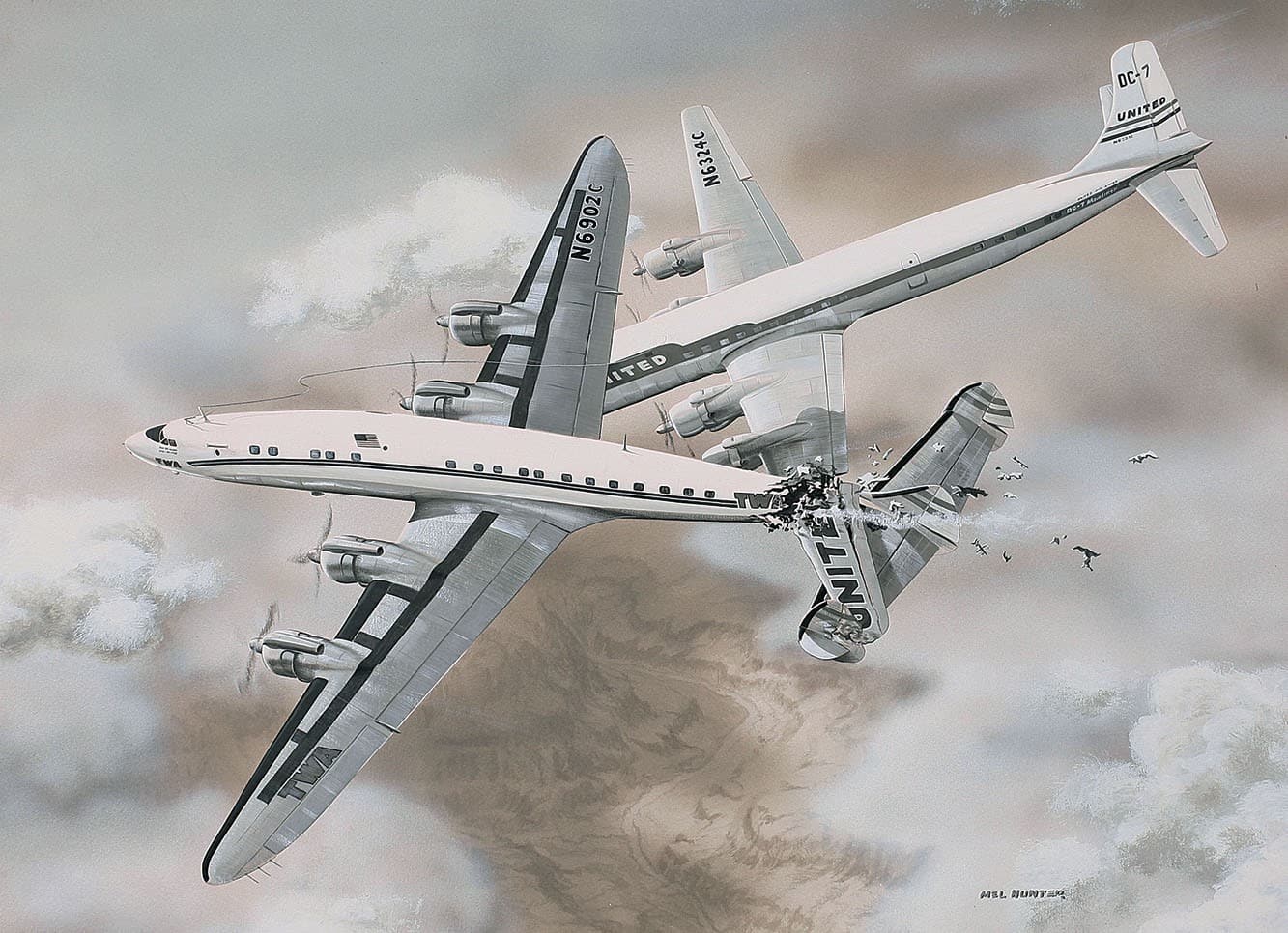
An Overwhelming Task
Rescue efforts for the TWA Super Constellation and United DC-7 collision were hindered by the remote location of the crash site, deep inside the Grand Canyon near the confluence of the Colorado River and the Little Colorado River.
The TWA flight mainly hit on the northeast terrace of Temple Butte and United’s wreckage was strewn over the southern cliff face of Chuar Butte. United Airlines brought in a special Swiss mountain rescue team as the wreckage proved too difficult for conventional search and rescue teams to handle.
However, due to the severe heat of the crash, the aluminum of the airplanes had melted and fused to the bedrock, making it impossible for any survivors to be found and all 128 people on board the planes perished.
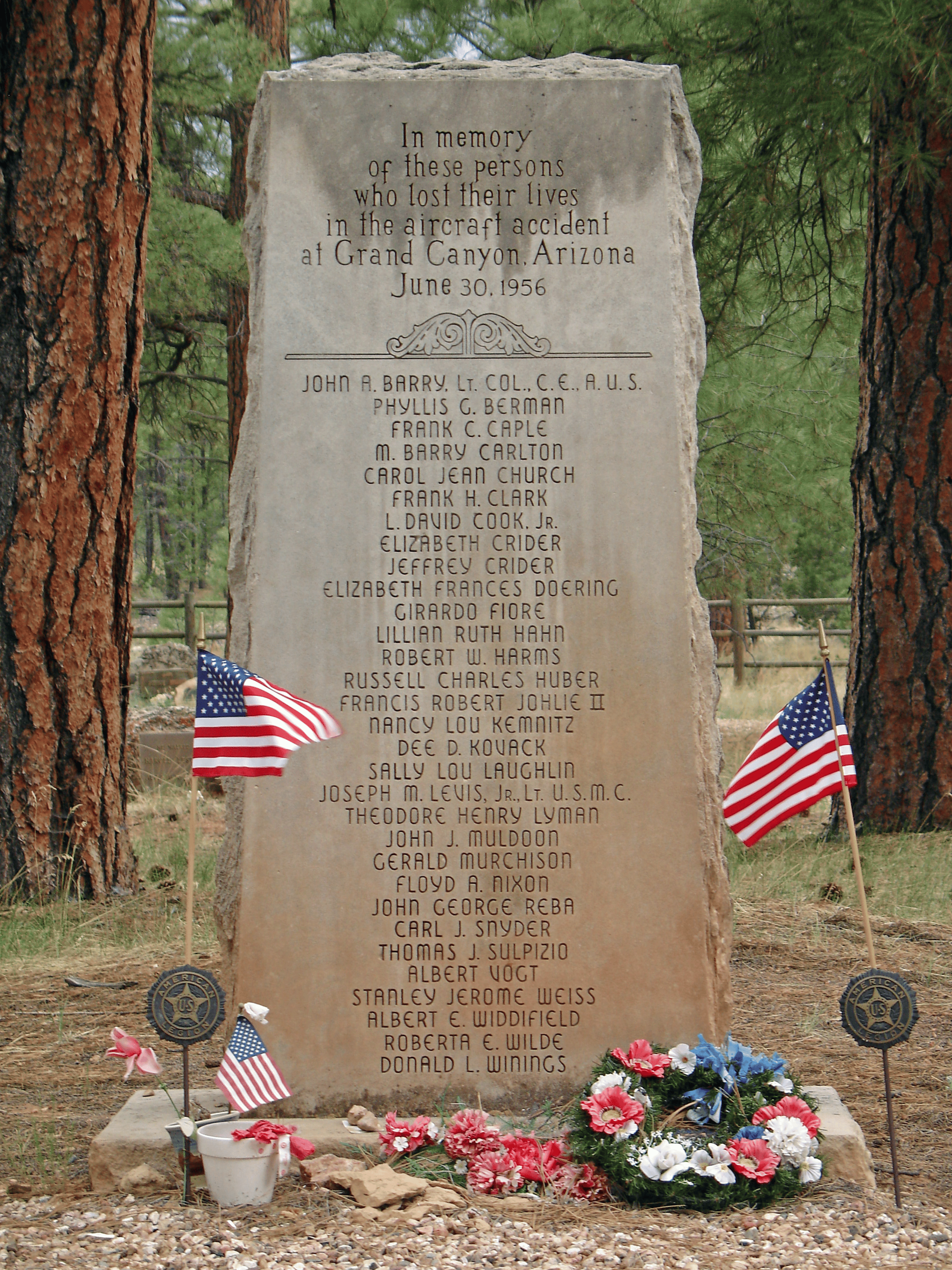
The wreckage from the 1956 TWA Super Constellation and United DC-7 collision is still scattered over the crash sites in the Grand Canyon, near the confluence of the Colorado River and the Little Colorado River.
The remote location and difficult terrain made it impossible for the wreckage to be removed. On sunny days, the gnarled pieces of metal that remain can still be seen resting on the cliffs, serving as a reminder of the tragic event that took the lives of all 128 people on board.
Air Disaster Leads To Major Changes
The 1956 TWA Super Constellation and United DC-7 collision brought the issue of airline safety to the public’s attention and was widely covered in the news.
A week after the accident, a Congressional hearing was held in Las Vegas to investigate the cause of the crash. The collision was the most deadly civilian plane crash up to that time and remains one of the worst commercial aviation disasters in American history.
Accident investigators determined that the pilots had simply failed to see each other, but the main cause was the U.S.’s outdated air traffic control system, which relied heavily on visual cues by pilots and estimates by controllers. The existing federal Air Traffic Control system could not segregate planes flying by instrument from those flying under visual flight rules, or fast-moving planes from slower ones.
As a result of the investigation, Congress passed legislation in 1957 that formed the Federal Aviation Administration (FAA) and the National Transportation Safety Board (NTSB) to improve and regulate air traffic control and airline safety.
Desert View Point and 1956 Aviation Memorial
At Desert View point, a National Historic Landmark plaque and stone memorial commemorate the 1956 Grand Canyon TWA-United Airlines Aviation Accident Site, a horrific airline collision over Grand Canyon that took place on June 30, 1956.
To get there, you begin from the main Desert View parking area, a short .25 mile walk takes you past restrooms, the general store/market and the trading post. The point itself is located a few steps beyond the base of the historic Watchtower. There are guardrails around the cliff edge for your safety.

14. The Grand Canyon Makes A Cameo Appearance In National Lampoon’s Vacation
National Lampoon’s Vacation is a 1983 comedy film directed by Harold Ramis. The film follows the Griswold family, led by Clark Griswold (Chevy Chase) and his wife Ellen (Beverly D’Angelo), as they embark on a cross-country trip from the suburbs of Chicago to Walley World, a fictional amusement park in California.
Along the way, they encounter various obstacles and comical situations, including car problems and the death of a family member.
The Grand Canyon makes a memorable appearance in the film as the Griswold family stops to visit the national park.
The film also features appearances from other actors such as Christie Brinkley and John Candy.
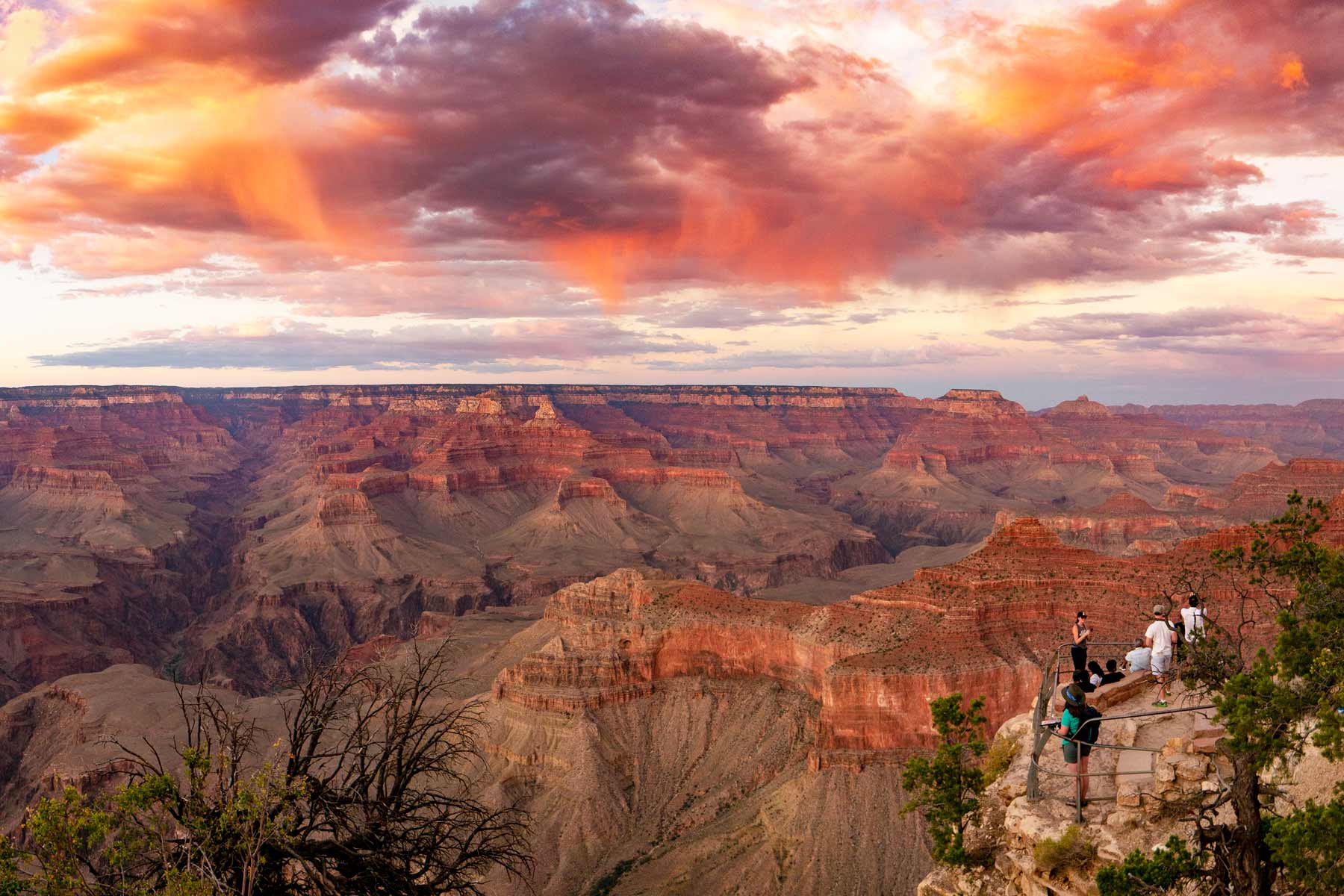
When the Griswold family stops at the canyon on a cross-country road trip, Clark is so fixated on staying on schedule that he permits a mere passing glance at the majestic site before packing everyone back into the family station wagon to keep going.
Where did the Griswold’s stay in the Grand Canyon? The actual location is the Coronado Motel.
More Interesting Facts About The Film
The roller coaster, referred to by Clark as the “Whipper Snapper”, is actually called “The Revolution.“ It was the first roller coaster to have a 360-degree vertical loop.
John Candy was paid $1 million for his brief appearance at the end of the movie. He must have had a very good agent.
The film’s climactic trek through Walley World was actually filmed at Six Flags Magic Mountain in Valencia, California. Director Harold Ramis had Chase, John Candy, and other cast members board a roller coaster with a camera mounted to it in order to capture shots on the rides.
Dana Barron, who played Audrey Griswold, became so nauseous with motion sickness that she had to be given repeated doses of Dramamine.

The film was an immediate hit, spawning four sequels of increasingly diminishing returns as well as a 2015 Vacation sort-of-sequel, featuring Griswold’s son, Rusty (played by Ed Helms), who appears determined to equal or surpass his father’s earlier travel mistakes.
15. There are Hidden Caves In The Grand Canyon
Believe it or not, there are an estimated 1,000 caves in the Grand Canyon.
Of those, 335 have been recorded. Very few have been mapped or inventoried. Most have developed in the limestone of the Redwall and Muav formations, although some are known to exist in other formations.
Today, only one cave is open to the public — the Cave of the Domes on Horseshoe Mesa.
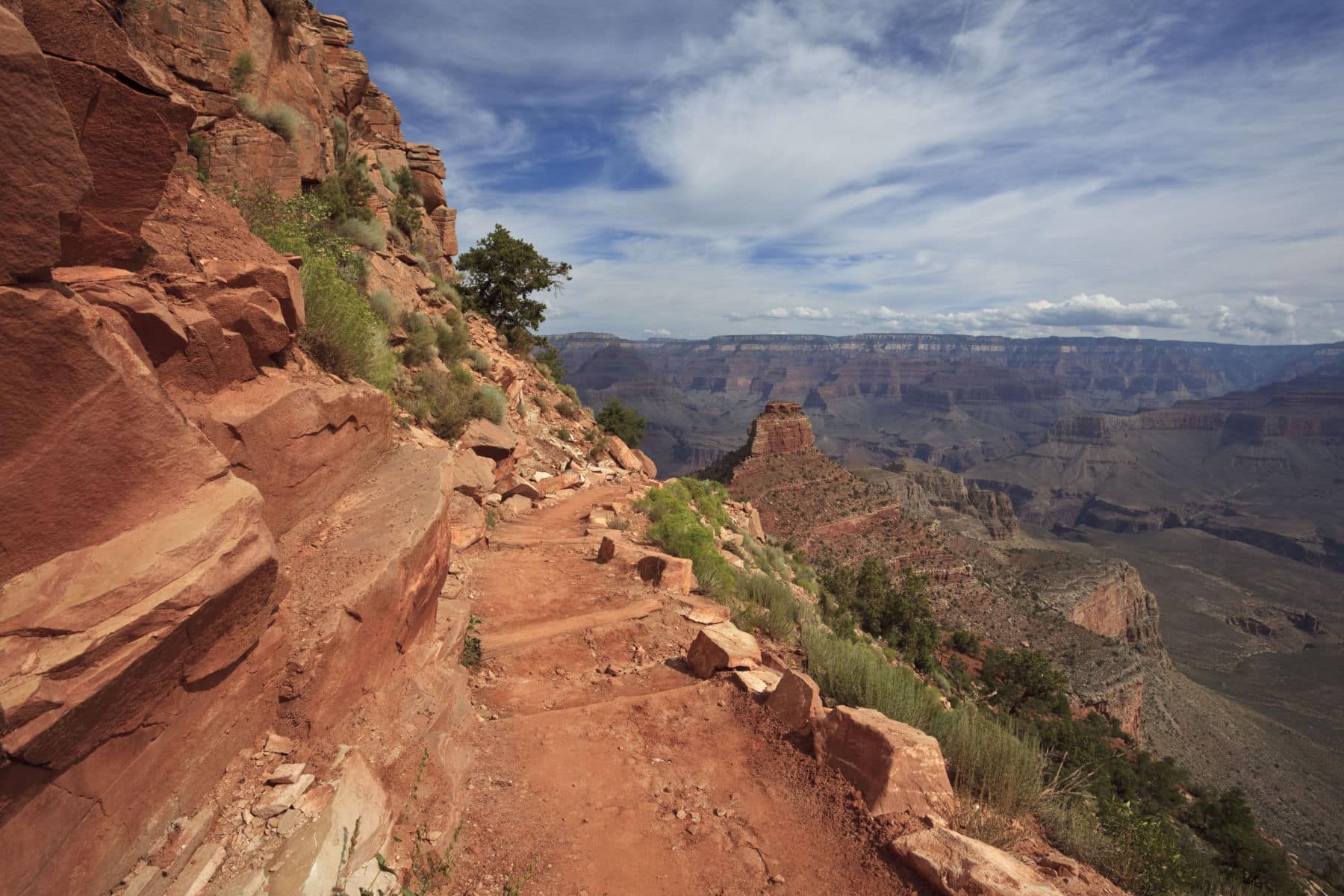
16. There’s A Secret At The Bottom Of The Grand Canyon
People are drawn to the Grand Canyon because of the spectacular views. Most don’t realize that there’s a secret at the bottom of the canyon however.
What’s the secret? Ancient fossils of sea creatures are buried in the limestone rock.
Ancient fossils preserved in the rock layers range from algal mats and microfossils from Precambrian Time 1,200 million to 740 million years ago to a multitude of body and trace fossils from the Paleozoic Era 525-270 million years ago.

Why Trust Us About Grand Canyon National Park?
We’re Jim Pattiz and Will Pattiz, collectively known as the Pattiz Brothers (and sometimes the Parks Brothers) and we absolutely LOVE the national parks.
You should probably know that we don’t just make this stuff up out of thin air. We’ve spent our entire adult lives exploring and filming America’s national parks and public lands.
We’ve worked with the National Park Service, the Department of Interior, USDA, and the U.S. Forest Service for years creating films on important places and issues. Our work has been featured in leading publications all over the world and even some people outside of our immediate family call us experts on the national parks.

Meet The Parks Brothers
Map Of The Grand Canyon
List Of The Facts About The Grand Canyon
- The Grand Canyon Was Explored By A Real Life “Indiana Jones”
- Grand Canyon Is A Gateway To The Afterlife
- Two Intrepid Brothers Invented Tourism Photography At The Grand Canyon
- The First Woman To Row The The Marble & Grand Canyons
- The Grand Canyon Creates Its Own Weather
- How Old Is The Grand Canyon? We Don’t Know
- The Grand Canyon Was Part Of A Giant Hoax
- Grand Canyon Was Part Of The Great Unconformity
- The Grand Canyon Has Pink Snakes
- The Grand Canyon Is Actually Filled With Wildlife
- There’s Actually A Town Inside Of The Grand Canyon
- The Grand Canyon Is Full Of Fossils
- The Grand Canyon Featured A Plane Crash Which Changed Aviation History
- The Grand Canyon Makes A Cameo Appearance In National Lampoon’s Vacation
- There are Hidden Caves In The Grand Canyon
- There’s A Secret At The Bottom Of The Grand Canyon
We Hope You’ll Follow Our Journey

Our goal here at More Than Just Parks is to share the beauty of America’s national parks and public lands through stunning short films in an effort to get Americans and the world to see the true value in land conservation.
We hope you’ll follow our journey through the parks and help us to keep them the incredible places that they are. If you’re interested joining the adventure, sign up below!
Helpful Related Articles
Things to Do North Rim Grand Canyon: 15 Epic Things to Do at the North Rim of the Grand Canyon
Grand Canyon Viewpoints: 20 Best Views of the Grand Canyon (National Park)
Grand Canyon South Rim Things to Do: 15 Amazing Things to Do at the Grand Canyon South Rim
Things to Do at the Grand Canyon: 20 Best Things to Do at Grand Canyon National Park
Closest Cities to the Grand Canyon: 10 Closest Cities Near the Grand Canyon
Grand Canyon Facts: 15 Fascinating Grand Canyon National Park Facts
Desert View Watchtower: Explore the Historic Desert View Watchtower (Grand Canyon)
Grand Canyon in Winter: Visiting the Grand Canyon in December (Winter Guide)
Arizona National Parks: 24 Epic Arizona National Parks to Visit (Photos + Guide)
Things to Do Saguaro NP: 15 Best Things to Do Saguaro National Park
Things to Do Zion NP: 18 Epic Things to Do at Zion National Park
Best Hikes Saguaro NP: 10 Best Saguaro National Park Hikes
National Parks Near Tucson: 10 Best National Parks Near Tucson
National Parks Near Phoenix: 10 Best National Parks Near Phoenix
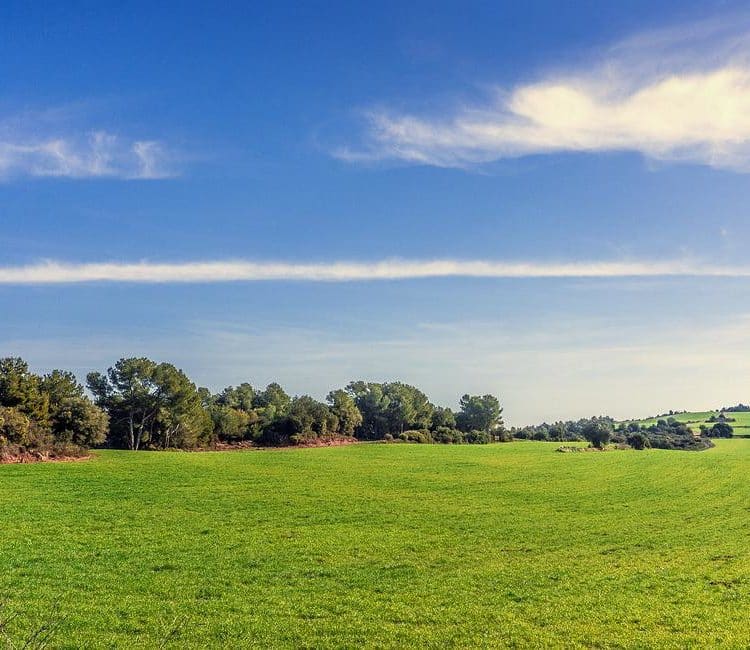
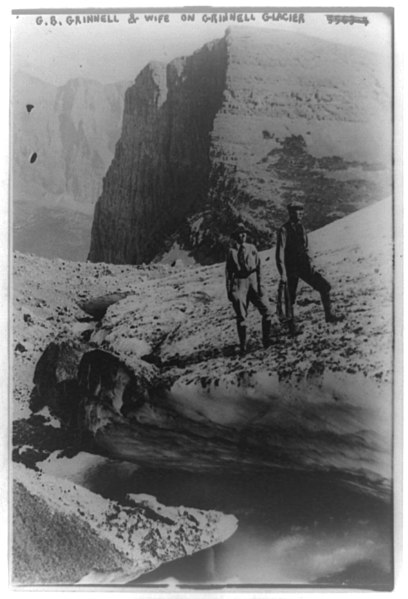
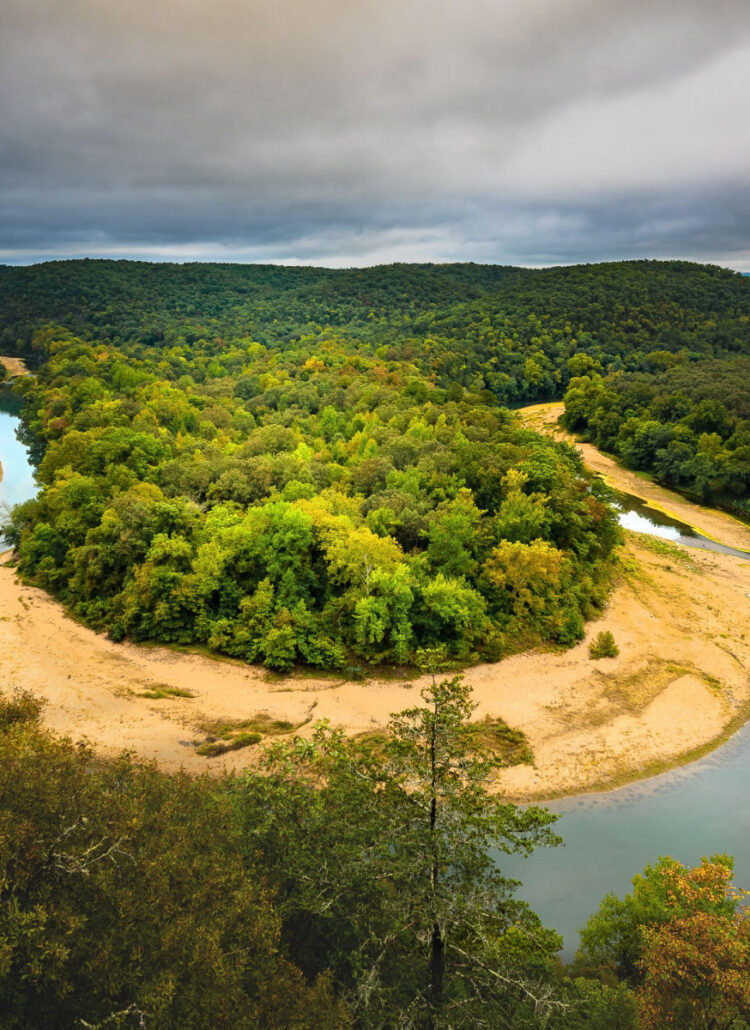
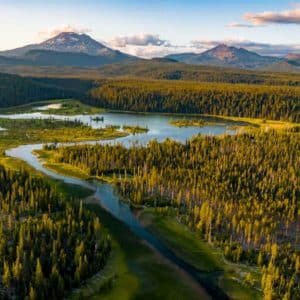

Leave a Reply